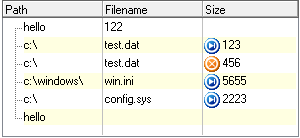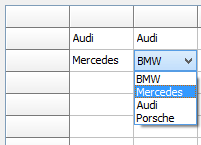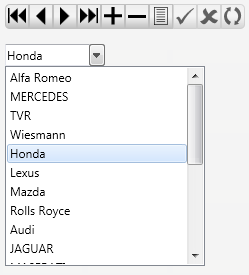type
TDBMathLib = class(TMathLib)
private
{ Private declarations }
FDataSource: TDataSource;
protected
{ Protected declarations }
procedure Notification(AComponent: TComponent; AOperation: TOperation); override;
public
{ Public declarations }
function HandlesStrFunction(FuncName:string):Boolean; override;
function CalcStrFunction(FuncName:string;Params:TStringList;var ErrType,ErrParam: Integer):string; override;
published
{ Published declarations }
property DataSource: TDataSource read FDataSource write FDataSource;
end;
implementation
{ TDBMathLib }
function TDBMathLib.CalcStrFunction(FuncName: string; Params: TStringList;
var ErrType, ErrParam: Integer): string;
var
s: string;
n,e: integer;
fld: TField;
begin
if (FuncName = 'DBV') then
begin
if Params.Count <> 2 then
begin
ErrType := Error_InvalidNrOfParams;
Exit;
end;
if not Assigned(DataSource) then
begin
ErrType := Error_NoDataSource;
Exit;
end;
if not Assigned(DataSource.DataSet) then
begin
ErrType := Error_NoDataSet;
Exit;
end;
if not DataSource.DataSet.Active then
begin
ErrType := Error_NoDataSetActive;
Exit;
end;
s := Params.Strings[0]; // DB FIELD value
fld := DataSource.DataSet.FieldByName(s);
if not Assigned(fld) then
begin
ErrType := Error_InvalidValue;
ErrParam := 1;
end
else
begin
val(Params.Strings[1],n, e);
DataSource.DataSet.First;
DataSource.DataSet.MoveBy(n);
Result := fld.AsString;
end;
end;
end;
function TDBMathLib.HandlesStrFunction(FuncName: string): Boolean;
begin
Result := FuncName = 'DBV';
end;
procedure TDBMathLib.Notification(AComponent: TComponent;
AOperation: TOperation);
begin
inherited;
if (AOperation = opRemove) and (AComponent = FDataSource) then
FDataSource := nil;
end;



















